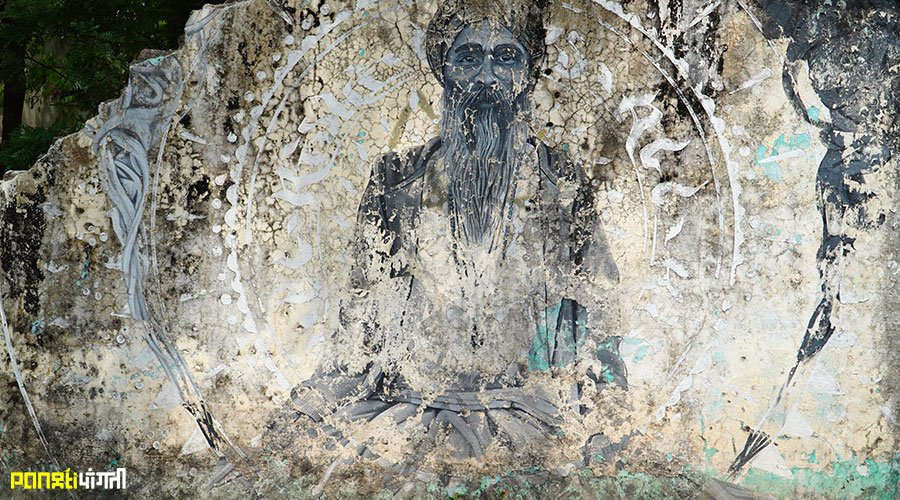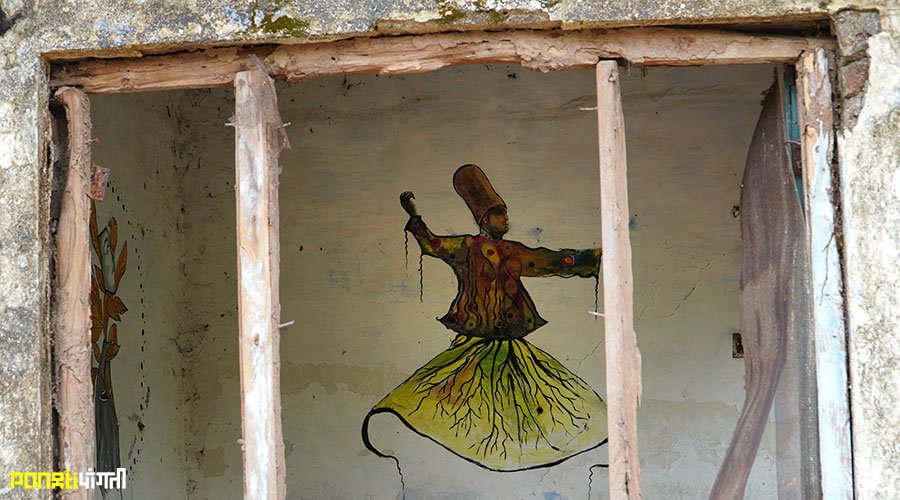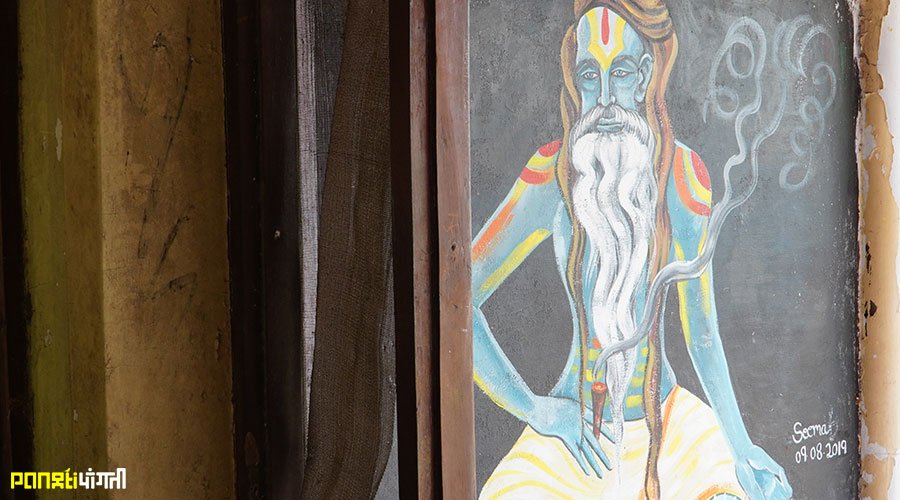Wall murals of Beatles Ashram
As a young college student I loved Beatles. Even though the era of thrash metal had arrived, I latched on to Beatles. The reason could be that I understood the lyrics easily. The other two bands I liked were Pink Floyd and Doors. I realized much later that latching on to Beatles was not only due to the ease of grasping the words but also because their music was soothing and lyrics interesting. While in design school, I watched the film ‘Yellow Submarine’ many times. I found it profound.

Slowly my listening decreased. Unlike many others, I get distracted from work if there is some music playing. This happens even when I am woodworking. I feel that immersive work gives us time to retrospect as well as anticipate. It is meditative in nature, even if one is designing an interface for a new mobile app. For me, music disrupts that process.
But the terms Beatles and Pink Floyd still gets me nostalgic and charged up. I still find them interesting. I have watched yellow submarine many times over. In fact the name of our farm is Manakaar – the shape of our mind – a term, amongst other things, also inspired by John Lennon’s ‘imagine’. The logo of our farm is also a tribute to Mahatma Gandhi and John Lennon’s ‘imagine’.

So when I heard that there is a place called Beatles Ashram in Rishikesh, I was more than keen to visit the place. Then I found that a friend Raju Gusain has been instrumental in digging out the history of the place and helping restore this historic space, which was lying abandoned and vandalized.


The ashram, originally envisaged as Shankaracharya Ashram, by the famous Mahesh Yogi eventually ended up becoming a Mahesh Yogi ashram, popularly known as ‘Chaurasi Kutia’, which means 84 cottages. Mahesh Yogi was a pretty well-known figure during those times. Arrival of Beatles at the Ashram attracted the curiosity of the entire world towards the yogi, the ashram and India. Popularity of Beatles was almost at its peak and everyone was keen to know what these guys were doing in India. In the same time period Mia Farrow was also a resident of the ashram. The allegation by Mia farrow that Maharishi Yogi made sexual advances led to the downfall of the Ashram. It is believed that Beatles too left the ashram due to the same reason.


It is believed that one of the reasons why Beatles came to the ashram was to bring Cynthia and John Lennon closer. Cynthia was John’s first wife. Nothing came much out of it but in that short span of 8 weeks Beatles ended but writing and composing 48 songs, many of them chart-busters. This was perhaps their most productive period.
The Beatles ashram is a very interesting space to engage with but if you want to know where Beatles got their private lessons, where they sat and composed many songs, in which room they lived… you will have to request Raju Gusain to accompany you. He has been researching on Beatles and this ashram for almost 20 years now. Even though many people, including me, have told him to engage in this professionally, he is slightly hesitant. Professionally, he is a journalist, writer and activist.

There are many things to be told about the ashram but its best you personally witness the space and hear the narrative from the horse’s mouth. There are many films on YouTube about the ashram. What I present here is a photo documentary of wall murals of the ashram.




These murals were created as a part of revival of the ashram. The most remarkable murals are by the legendary artist – Miles Toland, a US based artist who has painted wall murals across the world.



The murals by Miles Toland are specially eye catching because they intrinsically merge with the surrounding. The colours and the form ‘belong’ to the space and its legend. If one was to tell you that these murals were created when Beatles were here, you may easily buy that story. That is the power of these murals.

Apart from Toland, there are murals by art x pan and other artists. Some of these works are interesting while some fail to touch the soul, and some could be termed as gimmicky.










And in stark contradiction are murals created using glossy enamels, in colours and forms that do not belong to the space. In some ways, they are a display of ignorance and arrogance of the creators and those who commissioned them. One can only hope that more such work so not destroy the serenity and sanctity of this lovely space.



I end this write write-up with a film made by Mike Toland himself, about making of these murals, and a short video by BBC, featuring Raju Gusain. And I sincerely hope that you get a chance soon to witness this hidden treasure.
I would have loved to embed the YouTube video of an episode on Abandoned Engineering (Discovery channel), but the video owner has disabled the embedding feature hence I leave you with the link to the video.












Interesting Place. Nice Post !